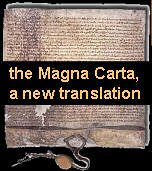geothermal
basics
- Geothermal means extracting heat from the Earth.
- The heat is then transferred to the place of work.
- Sometimes that heat is concentrated by heat exchangers.
- The ‘work’ to be done by the heat varies.
- The heat comes from two directions
- from the sun (a fusion source)
- from the fission at the centre of the Earth
- Temperatures in the ground, and the heat available, vary with depth.
Temperature further differs according to subsurface/rock conditions,
as well as surface conditions such as closeness to the equator (latitude).
For instance, the below-surface heat can be a few feet down in temperate
zones, or thousands of feet down in permafrost zones. Wheras, in Iceland,
the heat from the depths of the earth can be bubbling to the surface.
The term ‘geothermal’ is sometimes used in a confusing manner,
because there are two common approaches to heat extraction from the Earth
in a geothermal system:
- Local, private systems;
- community generation.
Geothermal heat can be extracted from deep bores, or with horizontal
systems that are only a few feet below the ground’s surface. In
this briefing document, we are most interested in shallow-level systems
with heat exchangers (heat concentrators). If there is enough room, the
pipes, often in coils, are spread out in shallow trenches as described
in the article at Parris
puts in a heat pump.
“Well, the news is that it works. The system is simple to operate,
reliable, responsive, quiet and efficient, the house is warm as toast,
and the electricity bill (I used to have storage heaters) is plummeting.
But the pump cost about £7,000 and the groundworks cost as much
again. The planning bureaucracy was irksome and the mess horrendous.
It was not strictly an economic decision. I did it out of interest,
and because it's good to be a pioneer.”

In situations where land area is limited, an alternative solution is
to bore down a few hundred feet, as in following project:
“None of the other options I looked at compare to geothermal.
A geo system is so efficient that for each unit of energy put in, it
gets out three to five units of energy! Magic! It gets out five times
as much energy as a conventional high-efficiency furnace! Putting geo
into a typical home is, from a carbon perspective, equivalent to planting
an acre of trees, or taking two cars off the road! What technology can
compete with that?! The holy grail of heating and cooling, I say.”

heat
exchangers
Heat exchanger systems can also be used with an air exchange unit, and
are often reversable to provide cooling in hot weather. These are similar
to the boxes often seen hanging outside blocks of flats and offices in
warmer areas. Other heat exchangers use bodies of water, even swimming
pools or specially built underground systems as heat sources.
Heat exchangers usually provide between three and five units of heat
for one unit of input electricity, according to efficiency, and require
more energy the greater the temperature differential to be achieved.

“Any appliance that takes heat from one area and moves it to
another is a heat pump. [A refrigerator is a type of heat pump.]
“Most heat pump installations involve what is called a split
system. The outdoor unit contains the compressor and a heat exchanger,
called a coil. The indoor unit contains another coil, a fan that blows
air through your duct system, grille, and electric heating elements.
“The outdoor and indoor units are connected by copper tubes that
move a gas refrigerant (such as Freon) between the indoor and outdoor
coils. This refrigerant has the ability to absorb heat from the air,
even at very low temperatures.
“In the winter, the refrigerant absorbs heat from outdoor air
drawn across the outdoor coil. The refrigerant becomes hot but is made
even hotter (in excess of 140 degrees F) by going through the compressor.
“This hot gas travels through a copper tube to the indoor coil.
The fan draws air through your return grille and pushes the air across
the indoor coil. The hot gas transfers its heat to the air blown across
the coil and into the duct system.”
heat pump efficiency
The performance of a heat pump is often shown as the COP or Coefficient
of Performance. This relates to the amount of energy that is extracted
for each unit of energy used to run the pump.
A heat pump could provide between 3 and 5 kW of heat for each kW invested.
The return is effected by the temperature achieved from the source and
the heat or cooling required from the appliance.
For example, if 3kW is used by a electrically driven heat pump and
9kW is produced by a ground source for heating, the COP would be 3.

|






















